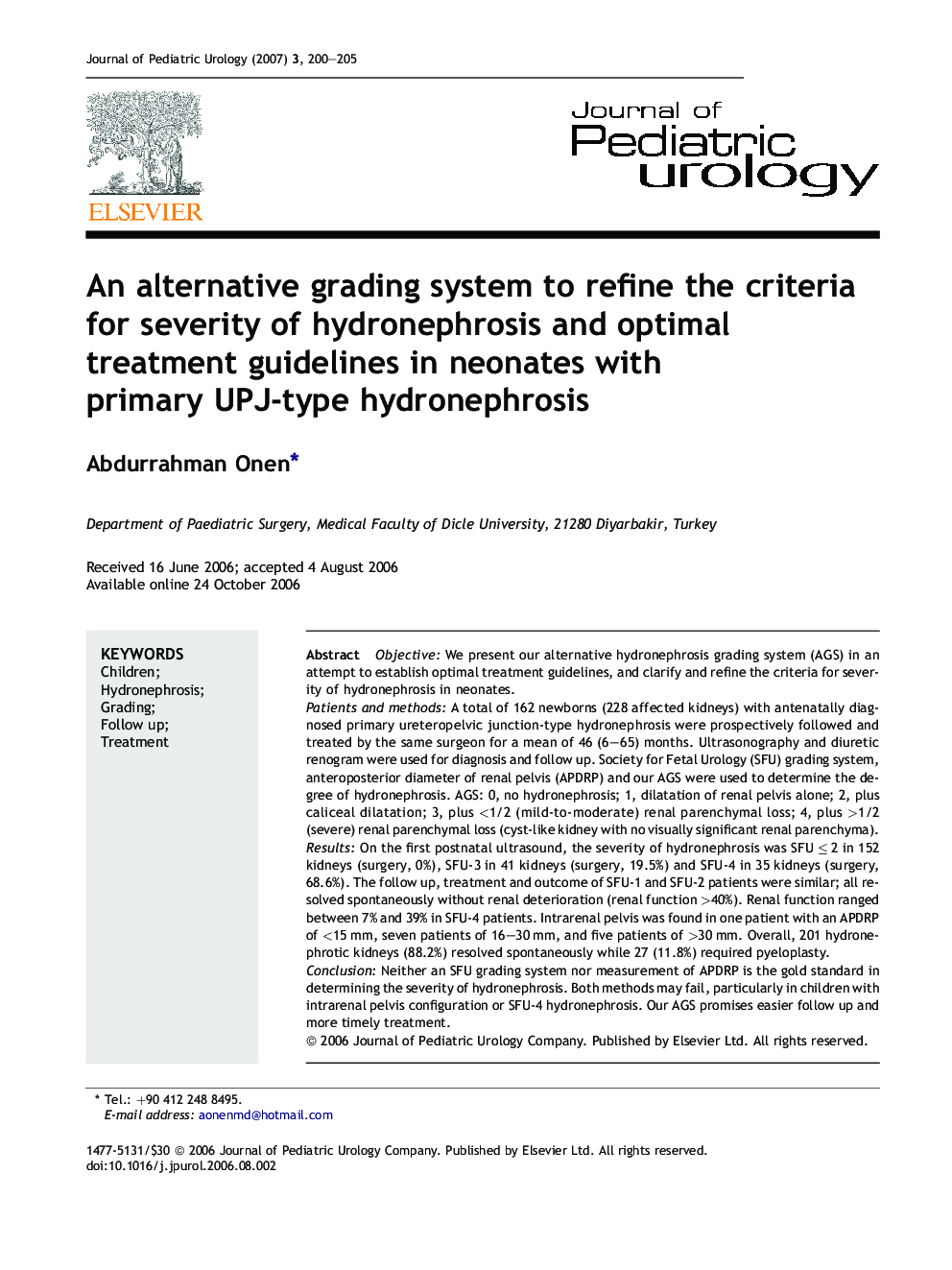| کد مقاله | کد نشریه | سال انتشار | مقاله انگلیسی | نسخه تمام متن |
|---|---|---|---|---|
| 4164090 | 1274326 | 2007 | 6 صفحه PDF | دانلود رایگان |

ObjectiveWe present our alternative hydronephrosis grading system (AGS) in an attempt to establish optimal treatment guidelines, and clarify and refine the criteria for severity of hydronephrosis in neonates.Patients and methodsA total of 162 newborns (228 affected kidneys) with antenatally diagnosed primary ureteropelvic junction-type hydronephrosis were prospectively followed and treated by the same surgeon for a mean of 46 (6–65) months. Ultrasonography and diuretic renogram were used for diagnosis and follow up. Society for Fetal Urology (SFU) grading system, anteroposterior diameter of renal pelvis (APDRP) and our AGS were used to determine the degree of hydronephrosis. AGS: 0, no hydronephrosis; 1, dilatation of renal pelvis alone; 2, plus caliceal dilatation; 3, plus <1/2 (mild-to-moderate) renal parenchymal loss; 4, plus >1/2 (severe) renal parenchymal loss (cyst-like kidney with no visually significant renal parenchyma).ResultsOn the first postnatal ultrasound, the severity of hydronephrosis was SFU ≤ 2 in 152 kidneys (surgery, 0%), SFU-3 in 41 kidneys (surgery, 19.5%) and SFU-4 in 35 kidneys (surgery, 68.6%). The follow up, treatment and outcome of SFU-1 and SFU-2 patients were similar; all resolved spontaneously without renal deterioration (renal function >40%). Renal function ranged between 7% and 39% in SFU-4 patients. Intrarenal pelvis was found in one patient with an APDRP of <15 mm, seven patients of 16–30 mm, and five patients of >30 mm. Overall, 201 hydronephrotic kidneys (88.2%) resolved spontaneously while 27 (11.8%) required pyeloplasty.ConclusionNeither an SFU grading system nor measurement of APDRP is the gold standard in determining the severity of hydronephrosis. Both methods may fail, particularly in children with intrarenal pelvis configuration or SFU-4 hydronephrosis. Our AGS promises easier follow up and more timely treatment.
Journal: Journal of Pediatric Urology - Volume 3, Issue 3, June 2007, Pages 200–205